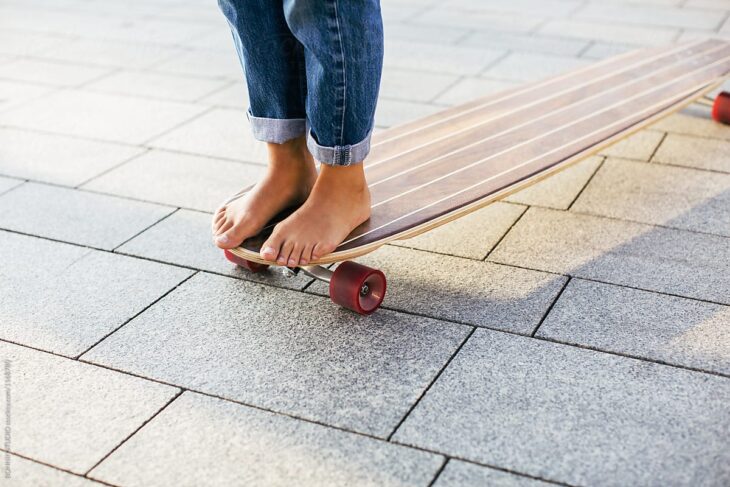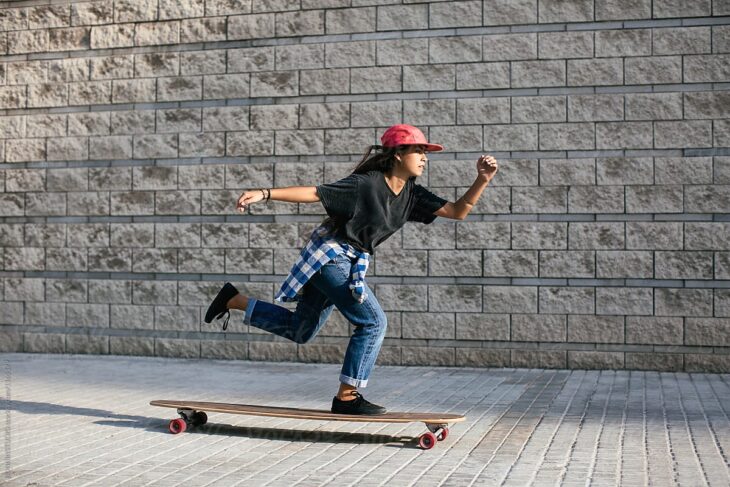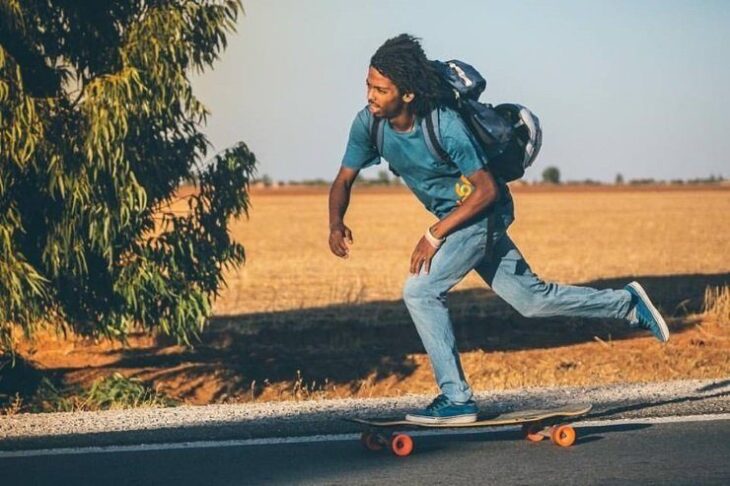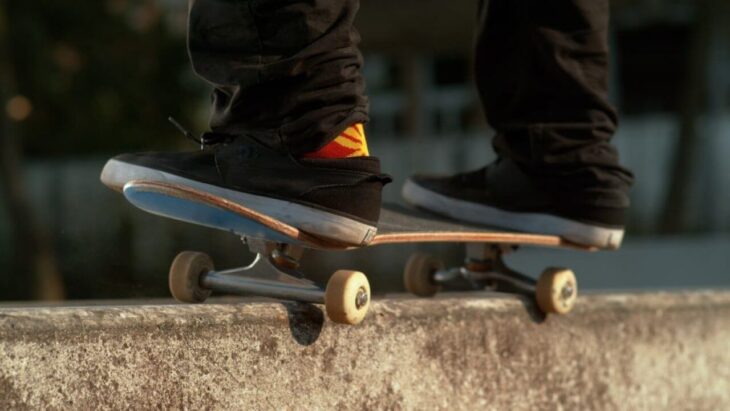Are you new to longboarding or else phobic to them? Then, the first step to crossing this unpleasant stage is learning how to stand on a longboard. Probably, like many other new skaters, fear has been holding you from skating, but it is time to overcome it.
Most people are inspired by renowned skateboarders or longboards like Bam Margera and are excited to start longboarding. However, getting started is what is holding them back because of the fear of falling or getting injured.
To help you get started, we have this post to teach you to stand on a longboard safely so you can be off learning how to do longboard tricks in no time. Let’s get started.
Contents
How do you longboard safely

Source: stocksy.com
Here are some safety tips you need to keep in mind as you learn how to stand on a longboard:
- Skate during daylight hours. This helps you to see the obstacles more clearly
- Always have the safety accessories. According to AAOS, they include a head helmet, knee pads, elbow pads, wrist guards’ gloves, and a mouth-guard
- Practice how to longboard on quiet streets or empty parking lots
- Do not attempt tricks or stunts until you no longer a beginner
- Avoid slippery surfaces especially if it is raining or snowing
- Keep every distraction away. This includes music on the background that may entirely occupy your mind—consequently making you unaware of the surrounding
- Get a professional or an experienced skater to train you
How to stand and skate on a longboard

Source: stocksy.com
Standing properly while skating is the first key to safety while skating. Without mastering it, then i wouldn’t lie if i say you will fall next time you get on the longboard. Are you ready for that? Imagining the due pain I guess absolutely not. Read through to identify the right posture while.
1. Are you a regular or goofy skater?
Getting the right stance on a longboard starts with identifying the dominant foot. Most people skate with the left foot forward while the right foot is back. This posture is known as “regular.”
On the other hand, there are the goofy skaters who place their right foot forward while the left leg is back.
Basically, the dominant foot should be at the back. So how can you identify your dominant foot? Follow the following steps;
- Ask someone to shove you such that you lose your balance. Identify the foot you will place forward while finding your balance
- Identify the foot which you usually use to kick a ball
- Still, you can pull a rope hard and identify the foot you will put forward to get balance and more pull
2. Position your feet on the deck
Ideally, feet positioning should be more extensive than the width of your shoulders. The front foot should be on a position of 45degrees on the deck while the back foot should be perpendicular to the deck.
3. Bend the knees

Source: ridingboards.com
Keeping your center of gravity as low as possible helps to increase stability. How can you achieve that? Here is the deal, slightly bend your knees to a comfortable posture.
Still, it would help if you do not lean either forward or backward unless you are jumping over a bump.
4. Try pushing forward
There are two main techniques that skaters use to move forward. The first one is taking off your back foot and using the right foot only. However, this requires a relaxed body because stiffness will make you lose the balance.
The other technique is ‘mongo’ style. It involves using the right foot and the earth as something to give you the momentum.
5. Learn how to stop
After learning how to get the longboard moving, it wouldn’t be fair if i don’t highlight how to come to a safe stop. Braking in longboards makes use of friction. Drag one of your legs to the ground to increase resistance, which slows motion.
Also, when moving at high speed, spreading your hands while standing upright slows down the motion.
The ideal longboard for you

Source: futuresport.co
The best longboard varies according to the style of each person. For those who like adrenaline and enjoy going downhill at high speed, using wheels with a lower hardness may be the most suitable, since their attachment to the ground is greater and will prevent possible falls.
For those who like to practice some more daring maneuvers, walk in places with many curves or simply enjoy the vibe while enjoying the landscape, a wheel with greater hardness may be ideal, as it offers less resistance in contact with the ground and allows turns and maneuvers are made easier.
The prices of a longboard can vary from $50 to more than $300. And the difference is in the brand, the quality of the materials and the practical utility of each longboard. Thus, if you are thinking of practicing this type of skateboard, look for something that can meet your needs without leaving quality aside.
For the sake of style and comfort, there are some accessories as well. Depending on the practical utility you give to your longboard, some accessories, such as different wheels and shapes, may interfere with your skateboarding experience. And this must be taken into account when buying or assembling yours.
It is worth mentioning here the importance of always practicing this or any other sport with safety equipment, such as helmets and knee pads, right?
Conclusion
It is quite possible to learn longboarding without falling in the entire training session. Did I actually mean that? Yes, I meant every word on a condition. Do you know how to stand on a longboard appropriately? How about safety longboarding tips?
The guidance in this article will help you to get started in longboarding. But remember this; if you have a flimsily constructed longboard, the tips might not be effective. Thus, get an expert-crafted tool from a trusted longboard brand.
